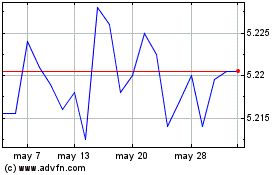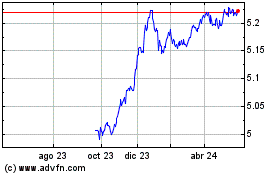(Decrease)/increase (33) 7 34
in payables
Net cash flow from (206) (300) (545)
operating
activities
Reconciliation of
net cash flow
to movement in
net funds
GBP'000 GBP'000 GBP'000
Increase in cash 1,669 2,450 1,044
in the period
Purchase/(disposal) 317 (1,925) (1,412)
of Non-qualifying
investments
Fair value adjustment 11 20 30
on Non-qualifying
investments
Change in net funds 1,997 545 (338)
Opening net funds 9,666 10,004 10,004
Closing net funds 11,663 10,549 9,666
Net funds comprise of cash of GBP2,894k (31 December 2012:
GBP1,225k; 30 June 2012: GBP2,631k) and Non-qualifying assets,
excluding Investment in Investee Companies, of GBP8,769k (31
December 2012: GBP8,441k; 30 June 2012: GBP7,918k).
NOTES TO THE FINANCIAL STATEMENTS (UNAUDITED)
for the six months ended 30 June 2013
1. Accounting Policies
a) Basis of Accounting
The financial statements for the Reporting Period have been
prepared in compliance with UK Generally Accepted Accounting
Practice, and with the Statement of Recommended Practice (the SORP)
entitled "Financial Statements of Investment Trust Companies and
Venture Capital Trusts" (with the exception of paragraph 80 of the
SORP regarding detailed disclosure of financial and operational
performance of the Company's unquoted investments due to their
confidential nature) which was issued in January 2009.
These financial statements, which have not been audited or
reviewed by the Auditors, have been prepared on a going concern
basis under the historical cost convention, except for the
measurement at fair value for investments. The principal accounting
policies have remained unchanged from those set out in the
Company's 2012 Annual Report and Accounts.
b) Valuation of Investments
The Company's business is investing in financial assets with a
view to profiting from their total return in the form of income and
capital growth. As set out in the International Private Equity and
Venture Capital Valuation Guidelines below, all investments are
designated at fair value.
International Private Equity and Venture Capital Valuation
Guidelines
Unquoted investments, including equity and loan investments, are
designated at fair value through profit and loss and are valued in
accordance with the International Private Equity and Venture
Capital Guidelines and Financial Reporting Standard 26 "Financial
Instruments: Recognition and Measurement" (FRS 26). Investments are
initially recognised at cost. The investments are subsequently
re-measured at fair value, as estimated by the Directors.
Investment holding gains or losses arising from the revaluation of
investments are taken directly to the Income Statement. Fair value
is determined as follows:
-- Fair value is the amount for which an asset could be exchanged between
knowledgeable, willing parties in an arm's length
transaction.
-- In estimating the fair value for an investment, the Manager will apply
a methodology that is appropriate in light of the nature, facts
and
circumstances of the investment and its materiality in the
context of
the total investment portfolio and will use reasonable
assumptions
and estimates.
-- An appropriate methodology incorporates available information about
all factors that are likely to materially affect the fair value
of the
investment. The valuation methodologies are applied consistently
from
period to period, except where a change would result in a
better
estimate of fair value. Any changes in valuation methodologies
will be
clearly disclosed in the financial statements.
The most widely used methodologies are listed below. In
assessing which methodology is appropriate, the Directors are
predisposed towards those methodologies that draw upon market-based
measures of risk and return.
-- Price of recent investment
-- Discounted cash flows/earnings multiple
-- Net assets
-- Available market prices
Of these, the two methodologies most applicable to the Company's
investments are:
1 - Price of recent investment
Where the investment being valued was made recently, its cost
will generally provide a good indication of value. It is generally
considered that this would only apply for a limited period; in
practice a period up to the start of the first live event or
entertainment content which forms the investment is often applied
as the long stop date for such a valuation.
2 - Discounted cash flows/earnings of the underlying
business
Investments can be valued by calculating the net present value
of expected future cashflows of the Investee Companies. In relation
to the Company's investments, anticipating future cashflows in
excess of the guaranteed amounts would clearly require highly
subjective judgements to be made in the early stage of each
investment and therefore would not be an appropriate methodology to
apply at such an early stage of the investment.
In the period prior to the second live event or entertainment
content it is considered appropriate to use the price paid for the
recent investment as the latest available information. Thereafter,
the portfolio of investments is fair valued on the discounted cash
flow/earnings basis using the latest available information on the
performance of the live event or entertainment content. Gains or
losses arising from changes in the fair value of the 'financial
assets at fair value through profit or loss' category are presented
in the Income Statement in the period in which they arise.
As a result of the above basis of valuation, there is
significant judgement associated with the valuation of
investments.
Non-qualifying Investments - OEICs
The Company's Non-qualifying Investments in interest bearing
money market OEICs are valued at fair value which is mid price.
They have been designated as fair value through profit or loss for
the purposes of FRS 26.
Gains and losses arising from changes in fair value of
Qualifying and Non-qualifying Investments are recognised as part of
the capital return within the Income Statement and allocated to the
realised or unrealised capital reserve as appropriate. Transaction
costs attributable to the acquisition or disposal of investments
are charged to capital within the Income Statement.
c) Investment Income
Interest income is recognised in the Income Statement under the
effective interest method. The effective interest rate is the rate
required to discount the expected future income streams over the
life of the loan to its initial carrying amount. The main impact
for the Company in that regard is the accounting treatment of the
loan note premiums. Where those loan note premiums are charged in
lieu of higher interest then they are credited to income over the
life of the advance to the extent those premiums are anticipated to
be collected.
d) Dividend Income
Dividend income is recognised in the Income Statement once it is
declared by the Investee Companies.
e) Expenses
All expenses are accounted for on an accruals basis. Expenses
are charged to the revenue account within the Income Statement
except that:
-- expenses which are incidental to the acquisition or disposal of an
investment are charged to capital in the Income Statement as
incurred;
-- expenses are split and presented partly as capital items where a
connection with the maintenance or enhancement of the value of
the
investments held can be demonstrated; and
-- the management fee has been allocated 50% to revenue and 50% to
capital, which represents the expected split of the Company's
long
term returns.
General expenses are paid for by the Ordinary share class and
recharged on a quarterly basis to the other share classes based on
the proportional net asset value per share class as at the last day
of the previous quarter.
f) Deferred Taxation
Deferred taxation is recognised in respect of all timing
differences that have originated but not reversed at the Balance
Sheet date where transactions or events that result in an
obligation to pay more, or a right to pay less, tax in the future
have occurred at the Balance Sheet date. This is subject to
deferred tax assets only being recognised if it is considered more
likely than not that there will be suitable profits from which the
future reversal of the underlying timing differences can be
deducted. Timing differences are differences arising between the
Company's taxable profits and its results as stated in the
financial statements which are capable of reversal in one or more
subsequent periods.
g) Ordinary shares, C shares, D shares, E shares, F shares, G
shares and H shares
The Company has seven classes of shares: Ordinary shares, C
shares, D shares, E shares, F shares, G shares and H shares. Each
share class has a separate pool of income and expenses as well as
assets and liabilities attributable to it. All share classes rank
pari passu with each other in terms of voting and other rights.
2. Basic and Diluted Return per share
Ish � Cobd 1-5 (LSE:IE1G)
Gráfica de Acción Histórica
De May 2024 a Jun 2024

Ish � Cobd 1-5 (LSE:IE1G)
Gráfica de Acción Histórica
De Jun 2023 a Jun 2024
